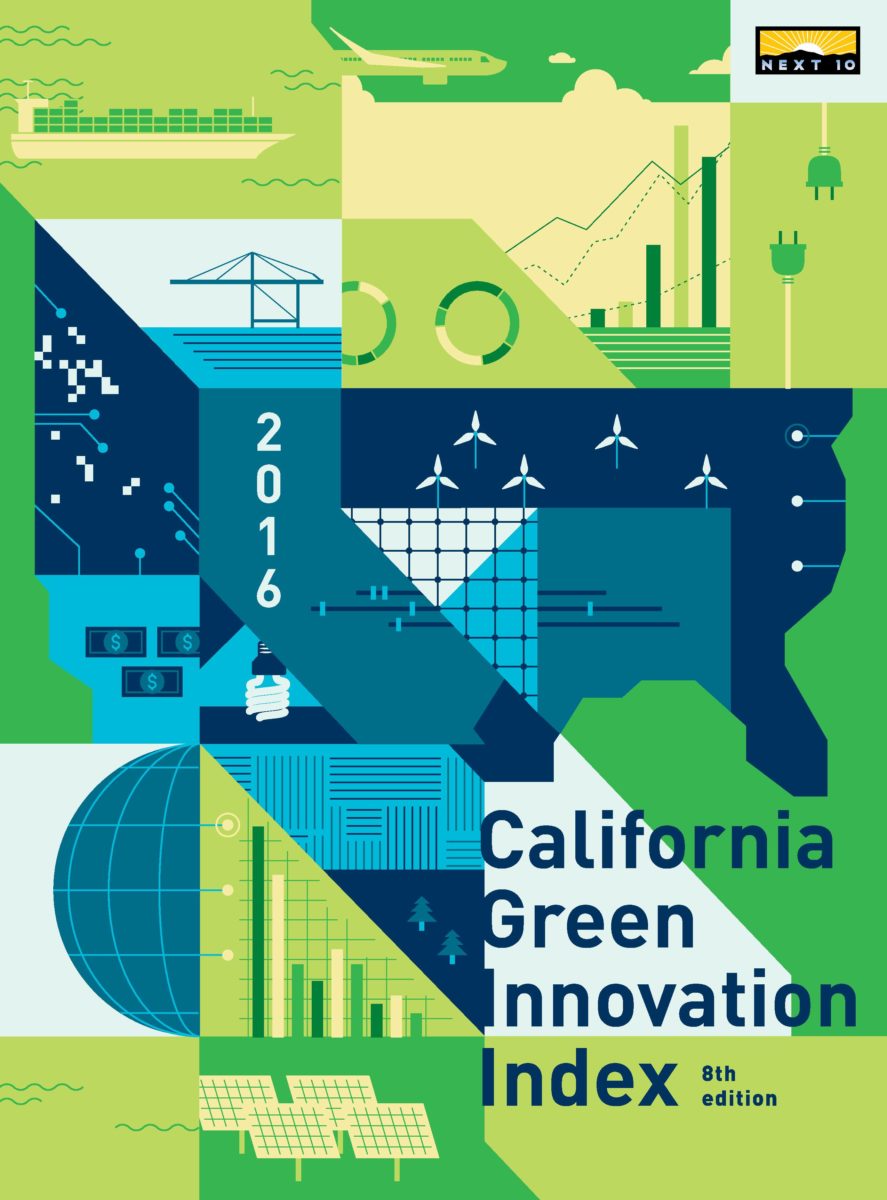Solar energy generation and zero emission vehicle (ZEV) adoption rates have increased dramatically in California – 1,378 percent in just five years for solar generation, and 244 percent in two years for ZEV registrations – signaling major market disruption as clean energy technology hotspots take root across California, and not just in traditional innovation hubs. The state’s top region for commercial and residential solar power is Riverside–San Bernardino–Ontario, while Fresno is number one for industrial solar power, according to the eighth edition of Next 10’s California Green Innovation Index, released today.
“As the 6th largest economy in the world and an innovator in climate and energy policy, California is forging a decoupling between economic growth and carbon emissions per capita,” said F. Noel Perry, businessman and founder of the nonpartisan nonprofit group Next 10. “California is not only the fourth-most energy productive economy in the world, the state also leads in key clean tech indicators, like clean tech patents and investment. Much of the rest of the nation is following our lead.”
This year’s Index tracks economic and environmental indicators at the regional, state, national and international level.
“California is a global leader when it comes to expanding its economy without increasing per capita emissions—this trend represents a shift from old growth models,” said Christopher Thornberg, founding partner of Beacon Economics, which compiled the Index for Next 10.
As of 2014, renewable energy sources served 25 percent of California’s retail electricity sales, and generated 20.1 percent of California’s total electricity, up from 12 percent in 2009. Internationally, California maintains its ranking as the 2nd least energy intensive economy and 4th in the world for the share of electricity generated from renewable sources.
Other Index highlights include:
California’s total state greenhouse gas emissions fell .62 percent in 2014.
Total solar residential installed capacity increased 65 percent in 2015, while industrial interconnected megawatts almost doubled.
California topped the nation in all major clean technology patent categories in 2015, registering more than five times the solar patents than the 2nd ranked state (New York), and generating over 25 percent of all energy efficiency patents in the U.S.
The Golden State pulled in $9.8 billion in clean tech investment in 2015, 68 percent of the U.S. total, up 35 percent from 2014.
Greenhouse gas emissions from surface transportation decreased .8 percent between 2011 and 2015, despite a 2.2 percent increase in total vehicle registrations.
In 2014, California’s average monthly residential electricity bill was 20 percent lower than the U.S. average due to higher levels of energy efficiency.
“California’s increasing energy productivity and renewable energy growth are not accidents,” Perry said. “They can be tied to policies, from the landmark AB 32 climate and clean energy law to last year’s SB 350. This year’s Green Innovation Index shows how you can trace progress on clean energy and climate from innovations in California’s metro areas to policies to commitments made by governments around the world.”






